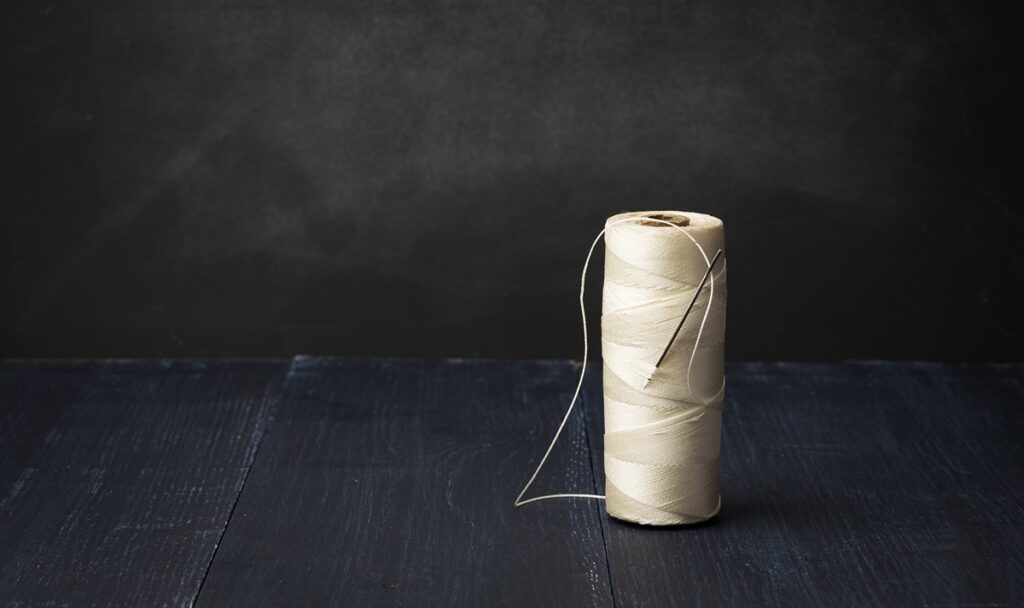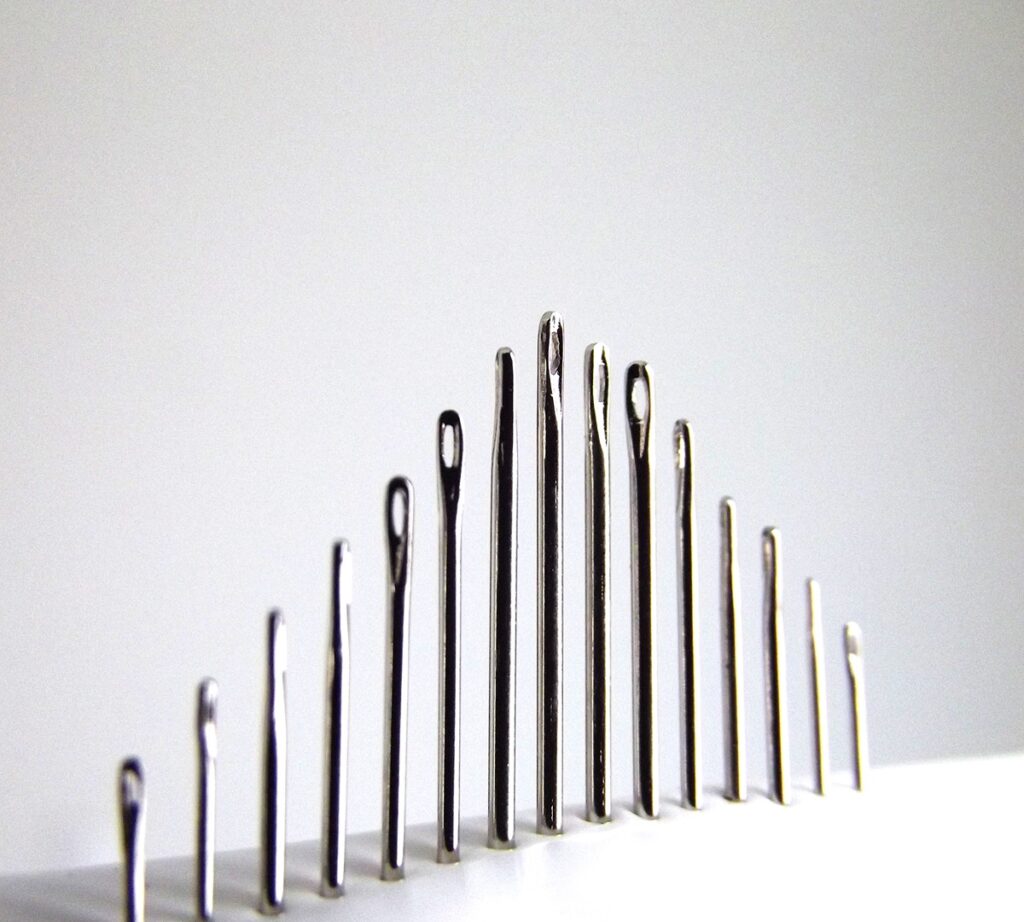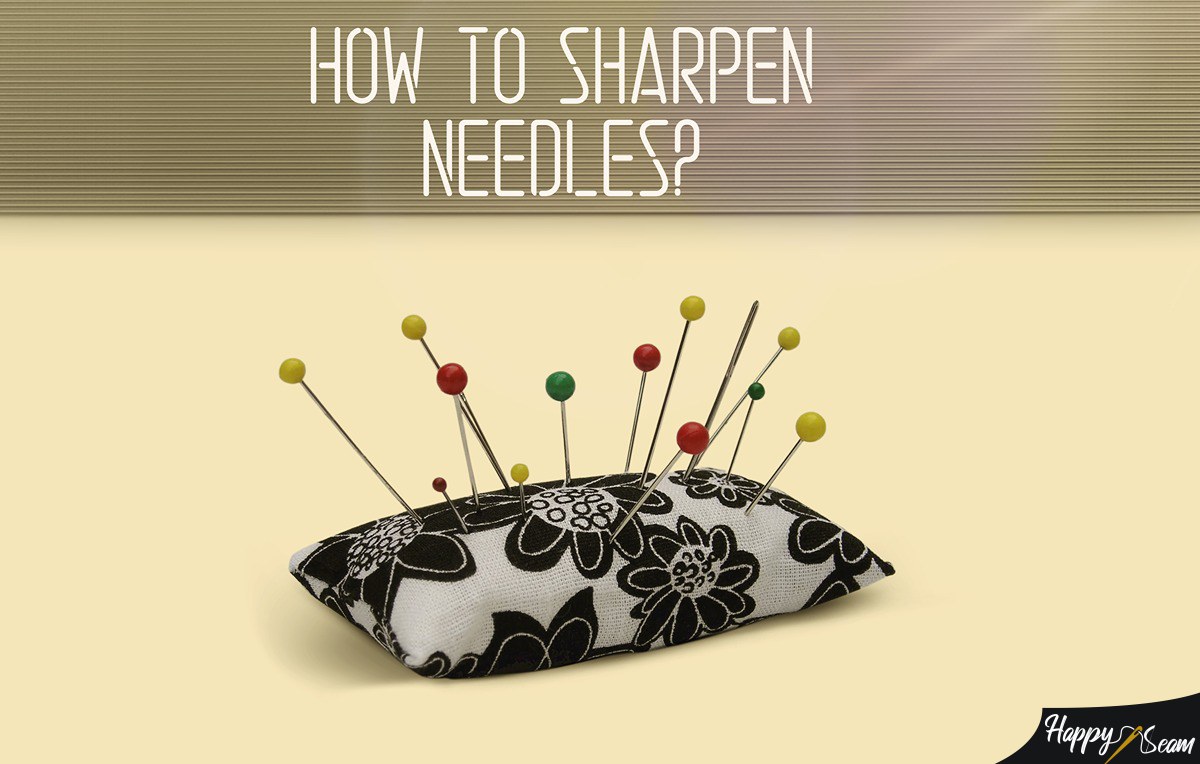If you like working on different sewing projects, you’ll most likely agree that there’s no other hobby that is as calming and enjoyable as sewing. But it can be quite disappointing and irritating to get your sewing supplies only to find that the needles you use most commonly have gotten dull.
Not only does sewing with a blunt needle make any sewing task difficult and less enjoyable, but it can also ruin the fabric you’re working on. So, if you’ve ever asked yourself how to sharpen needles and make them as good as new again, continue reading to find the answer.
Key Takeaways
- The most effective way to sharpen a needle is using an emery board.
- This method involves running the needle’s point across the surface of the emery board.
- You can also sharpen a needle by using a sharpening stone, sandpaper, pin cushion filled with steel wool, or aluminium foil and cooking oil.
- You know a needle is dull for sure if its point catches your fingernail when you run it across the point area.
- Using sharp needles is important because this makes any sewing project effortless, quick, effective, and fun, allows you to make clean stitches, and prevents the fabric from puckering and getting damaged.
So, How Can You Sharpen Needles?

One of the most effective ways you can do this is by using an emery board. Yes, emery boards are great for shaping nails, but they can be used to sharpen the points of needles too. Moreover, an emery board is one of those tools most people always have at home.
So, here’s how you can use this method to sharpen a needle:
- Put the emery board on a table or any other flat, smooth surface.
- Begin running the blunt needle across the grit of the tool at a shallow angle.
- Make sure you only rub the needle’s point against the tool in order to avoid damaging other areas of the needle.
You’ll be amazed to see how your dull needle turns sharp in no time.
You can also read a fantastic list of knitting needles for beginners.
Important Notes To Remember:
- Using an emery board with a fine grit rather than a coarse one is more effective in sharpening dull needles because not only will this help sharpen the point of the needle, but it’ll also make it smooth.
- If you don’t have an emery board at hand, you can use a nail file.
- Since sharpening a needle by using an emery board or any other tool with an abrasive surface tends to make its point rough, I recommend that you polish the needle, the whole of it, not just the tip, by using a metal-polishing paste to give it a nice, smooth surface. To polish a needle, apply a small amount of polishing paste on a cloth and just run the needle backward multiple times.
This is the most effective way to sharpen needles, but in case you want to try to do these following other methods, in what follows, I’ve presented a few more simple ways you can make a needle restore its sharpness.
Also Read: Great Gloves for Quilting
5 Easy Ways To Sharpen Needles

1. Fill A Pin Cushion With Steel Wool
In addition to being used for cleaning rusty objects and polishing metal, steel wool can be used for sharpening dull needles.
All you need to do is fill your pin cushion with this type of wool and then stick the needle into the cushion. Then twist the needle forward and backward and pull it out. Repeat this process several times or until the needle becomes sharp the way you want it.
2. Use A Silicon Carbide Stone
Here’s another simple method you can use to sharpen your needles quickly.
This method involves applying a few drops of oil on a fine silicon carbide stone and running the dull needle forward and backward across the stone multiple times. As you’re doing this, make sure you keep twisting the needle. You’ll be amazed by the results.
3. Use Sandpaper
Just like emery boards and nail files, sandpaper can be used for sharpening dull needles too. All you need to do is grab fine 800 grit sandpaper and start rubbing it against the point of the needle. This will help sharpen the needle but also take off any rust from the point thanks to the tiny abrasive particles present in the sandpaper.
4. Use Aluminium Foil And Cooking Oil
If you don’t really like the methods mentioned above, you might try using 2 items that you most likely already have stored in your kitchen cabinets to sharpen your needles – aluminium foil and cooking oil.
What you need to do is pour some of the oil into the bottle cap and dip the needlepoint in it. Then run the point across the foil forward and backward several times. Once you’re done, take the oil off of the needle by wiping it using a piece of paper towel or any other dry, clean cloth.
5. Use A Sharpening Stone
Get a fine sharpening stone and lay the blunt needle down by following its natural angle, which means the entire needle should be laying on the surface of the sharpening stone. Then start running the needle across the stone to the right and left side. As you’re dragging the needle down, make sure you spin it constantly. Your needle will get sharp in no time.
How Do You Know You Need To Sharpen Your Needle?
How long a needle lasts is determined by what sewing projects or what fabric types you use it for and how often you do that.
For instance, if you tend to sew 5 days a week or every day, your needle may get blunt very quickly, like in a week or so. On the other hand, if you perform sewing projects once or twice a week, then you can expect that the lifespan of your needle will be extended.
Another thing that can help make your needles last longer as well as improve your performance is sharpening them. However, you also need to know when exactly you should do that. Well, as someone who sews regularly, I can tell you that determining whether you should sharpen your needle or not is quite simple.
All you need to do is hold the needle straight with your non-dominant hand and then gently run the index finger of your dominant hand over the point of the needle. If you can notice that the point catches your fingernail, you can be sure the needle is worn down and ready to be sharpened.
However, if you also notice that the needle is bent, know that there’s no point in sharpening it. Get a new one instead.
Useful tip: You can tell if a needle is blunt in other ways too. For instance, if you notice that the fabric you’re working on often wrinkles or the thread constantly sheds, this is a telltale sign that you need to sharpen your needle.
Why Sharpening Needles Is Important
Regardless of what sewing project you’re performing, if you want it to be effortless, quick, enjoyable, and effective, you’ll need to use a sharp needle as a blunt one will never help you achieve this.
Moreover, sewing with a blunt needle can ruin the fabric, which is something you don’t want. And last but not least, sewing with a sharp needle allows you to do more precise and sharper stitches effortlessly.
Also, find out if you can iron embroidery.
Final Words
Well, that’s about it. All I can say is that I hope that you’ll find the methods I’ve presented here useful and that no matter which method you’ll decide to choose, it’ll work for you so that the next time you notice one of your needles is blunt, you don’t throw it away. Of course, unless it’s bent.
I also hope that having read this article, you’ll be more aware of the importance of sharpening needles.
I have been in the embroidery field for over 10 years. My career first started when I was an apprentice to a local seamstress where I started to learn the basics of garment construction and alterations. That’s where I started to love sewing and began to hone my skills even more.



